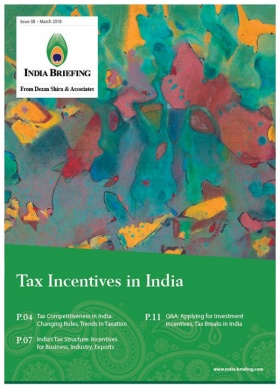Impact of GST on Imports and Exports in India
The Goods and Services Tax (GST) has changed the way businesses are done in India.
Introduced on July 1, 2017, the indirect tax has had a significant impact on the international trade of goods as it brought about changes in the structure of import and export taxation and withdrew various indirect taxes and exemptions.
In the pre-GST regime, the imports of goods and services were subject to multiple state and federal levies such as customs duty, countervailing duty (equivalent to excise duty), and special additional duty (equivalent to value added tax). The single integrated goods and services tax (IGST) under the GST has replaced all these taxes.
The import of certain goods, however, continue to attract basic customs duty, education cess, and other protective taxes, such as the anti-dumping duty and safe-guard duty, in addition to the IGST.
Integrated Goods and Services Tax
Imports under GST are treated as inter-state supply. Since GST is a destination-based tax, Integrated Goods and Services Tax (IGST) is levied in the state where the imported goods are consumed and imported services are received.
IGST can be paid using input tax credit of central goods and services tax (CGST), state goods and services tax (SGST), and IGST. The input tax credit is the credit that dealers can avail for taxes paid on their purchases, at the time of paying final tax on their sales.
In the case of CGST and SGST, no cross utilization of input tax credit is allowed. This means that input tax credit of CGST can only be utilized for CGST and IGST, and an input tax credit of SGST can only be utilized to pay for SGST and IGST.
Import of services under GST
Under GST, the import of service is taxable if –
- The supplier of service is located outside India;
- The recipient of service is located in India;
- The place of supply of service is in India; and,
- The supplier of service and the recipient of service are not merely establishments of a distinct person.
Tax returns
An importer is required to file monthly tax returns under GST. Under the previous law, the importer was required to file returns under state tax law for the purchase of goods (import of goods) and under central tax laws for claiming countervailing duties. While filing monthly returns, importers must declare the goods imported in table-5 of the GSTR-2 form, and services imported in table-6 of the GSTR-2 form.
Exemptions
Previously, the transportation of goods by aircraft and inbound shipment was not liable to service tax. Under GST, there is no such exemption.
Impact on exports
Under GST, exports are treated as ‘zero-rated supplies’. That is, supplies on which the GST rate is fixed as zero. If GST is paid at any point of supply against exports from India, a trader may either export without the payment of IGST under bond or letter of undertaking or may pay the IGST and claim a refund later.
In both cases, an exporter must provide details of the GST invoices in the shipping bill. The invoice must contain the following details:
- Name, address, and GSTIN of the supplier;
- Name and address of the recipient;
- Invoice number and date;
- HSN code of the goods along with description;
- Total value and quantity of goods, and,
- The signature of the supplier.
To claim the refund of IGST, the exporter can file the details of the tax paid, GST invoice, and shipping bill in table 6A in the form GSTR-1 of the relevant month.
Editor’s Note: This article was first published in July 2017 and is updated on May 15, 2019, to incorporate latest developments.
About Us
India Briefing is produced by Dezan Shira & Associates. The firm assists foreign investors throughout Asia and maintains offices in China, Hong Kong, Indonesia, Singapore, Vietnam, and Russia.
Please contact india@dezshira.com or visit our website at www.dezshira.com.
- Previous Article 印度中小企业GST组合方案(Composition Scheme)
- Next Article 在印度设立联络办事处










